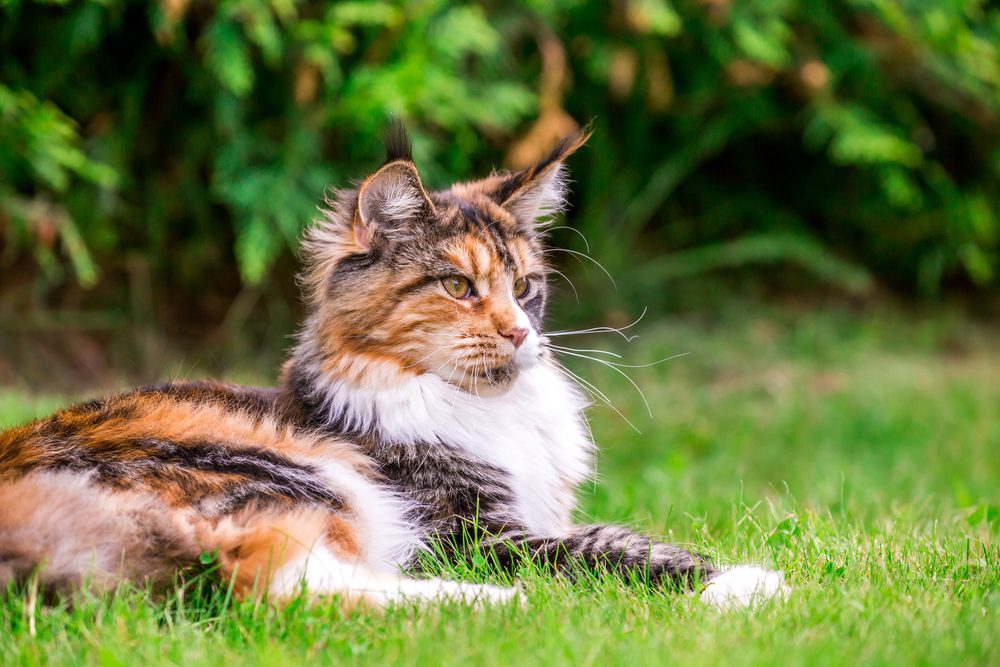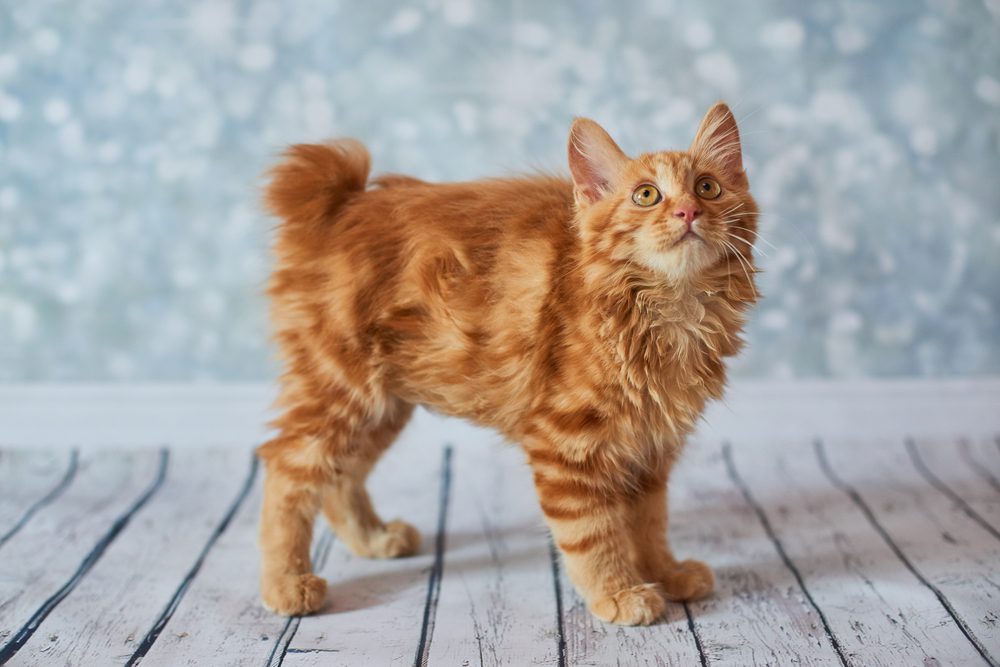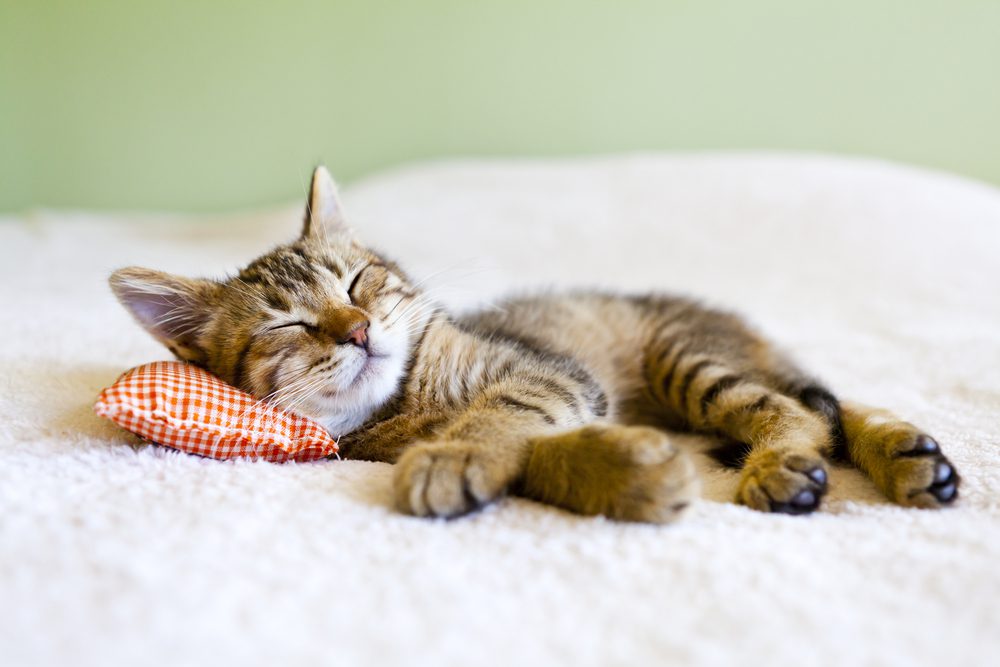Unfortunately, just like any other creature, cats can get sick too, and most of the time, these diseases are genetically inherited. Before adopting a cat, many people try to find out the breed of their cat, family and health history in order to know exactly their past and genetic traits.
Of course, sometimes it’s impossible to know everything about your cat, especially if you choose to adopt one from animal shelters, so in this case, it’s important to do a little research on the most common genetic diseases in cats. In this article, you will find everything about cat diseases and how to prevent them.
If you know your cat’s risk factors, you can take your cat to the veterinarian on a regular basis and prevent them from developing severe complications. Although purebred cats are known for developing genetic diseases more frequently than domestic short-haired cats, this is just a myth, as both categories are prone to genetic disorders.

Feline Lower Urinary Tract Disease (FLUTD)
Feline Lower Urinary Tract Disease (FLUTD), also known as feline urologic syndrome (FUS) or feline idiopathic cystitis (FIC), is a disease that affects the bladder and urethra of all cat breeds.
According to animal experts, some of the most common factors that can cause FLUTD are genetics, stress, excess body fat, and nutrition. So, if you want to prevent this disease in cats, you should pay more attention to their diet and minimize the things or behaviors that can stress them.
This disease can affect cats of all ages, especially those who are overweight, and the symptoms can be mild or severe, including difficulty and pain when urinating, frequent urination and blood in the urine.
To detect these symptoms and diseases, you need to pay more attention to their behavior and, if you notice that they lick themselves excessively, don’t urinate in the litter box and see blood in their urine, you should take them to the vet as soon as possible.
In general, Feline Lower Urinary Tract Disease (FLUTD) may be quite difficult to diagnose by cat owners, but your veterinarian will do a physical examination and a urinalysis to discover the problem.
Polycystic Kidney Disease
Polycystic kidney disease (PKD) in cats is a genetically inherited disease that affects the kidneys. This condition causes multiple cysts filled with fluids that can affect kidney function in cats.
Unfortunately, polycystic kidney disease can be found in any cat breed, especially in Persians, Himalayans, and related breeds, but these cysts are present from birth. Initially, they are very small, but they can change their size over time. The size of these cysts varies from cat breed to cat breed and some of them may show symptoms when they become adults.
Studies have shown that mixed breeds are less likely to develop this type of kidney disease. Your veterinarian will be able to correctly diagnose PKD based on your cat’s breed, medical history, blood, urine tests and other genetic tests.
However, if you want to adopt a Persian or Himalayan cat breed, you have to make sure that they don’t carry the PKD gene, but your veterinarian will give you more information about this procedure. Sadly there’s no treatment for this condition, but you can pay more attention to their diet and your vet will prescribe a pharmaceutical treatment to combat and prevent nausea and vomiting.
Hypertrophic Cardiomyopathy
Hypertrophic Cardiomyopathy is a genetic heart disease heart disease in cats. Studies have shown that this disease is more likely to be found in Maine Coons, Ragdolls and other oriental breeds, such as Sphynx, Burmese and Persians.
HCM is usually diagnosed in middle-aged cats, but the exception to the rule are Ragdolls because they can develop this disease from an early age. In general, cats who suffer from HCM are asymptomatic, but you have to take your cat to the vet for a concrete diagnosis, as a thorough examination is needed to discover the disease.
In addition, the most common symptoms of HCM include vomiting, decreased appetite and breathing difficulties. Even though many cats are usually asymptomatic, there is no treatment that can stop the natural progression of this disease. To normalize the heart rate and reduce the risk of sudden death, your veterinarian will prescribe a pharmaceutical treatment for your cat.

Manx Syndrome
The Manx cat is breed that has a natural mutation that shortens their tails. Some of them are known as being completely tailless. However, the Manx syndrome can be found in other breeds as well. Unfortunately, this disease affects not only their tail but the spine and other nerves as well. These complications can lead to spina bifida – which is a spine condition that can cause paralysis, urination, and defecation problems.
One of the most important things that you have to keep in mind when it comes to Manx syndrome is that the shorter the tail, the more the spine and spinal cord are affected. It has been proven that some Manx cats are more likely to develop severe arthritis in the long run.
According to animal experts, these problems can be prevented by avoiding breeding a tailless cat with another tailless cat. Being a genetically inherited disease, there is no effective treatment that can reduce the risk of developing this disease.
Type II Diabetes
Just like humans, cats can develop diabetes as well, if you don’t pay attention to their diet, physical condition and genetics. Feline diabetes, also known as diabetes mellitus, is a chronic disease that can’t be completely combated but kept under control through meds, diet and exercise.
Diabetes mellitus occurs when the body can’t produce or respond to an important hormone called insulin (insulin is produced by the pancreas). To be more specific, this disease affects the way your cat’s body metabolizes sugar (glucose). Sugar is among the main sources of fuel for their bodies – and insulin regulates the sugar levels in the cells. In type 2 diabetes, glucose levels are too high because their bodies don’t respond to insulin.
As we said before, this condition can’t be completely cured, but it can be managed through diet, meds and exercise, especially if your cat is obese. According to statistics, more than 1 percent of cats have type 2 diabetes.
Diabetes is also a common genetic disease that can be found in any type of cat breed. However, studies have recently shown that Burmese cats might develop type 2 diabetes than other breeds, but the cause is not yet known.
Symptoms of diabetes in cats are excessive urination, weight loss (even though they tend to eat more) and increased thirst. Your veterinarian can help you find a concrete diagnostic for your cat and prescribe meds and a balanced carbohydrate-free diet. Some cats may need regular insulin injections, but your vet will give you more details about it.
Deafness
In general, cats that have white fur and blue eyes are more likely to develop deafness, because, in fact, it is a genetic mutation. It’s important to remember that not all white cats that have blue eyes are deaf. Most of the time, deafness may be present at birth which means that this is a genetically inherited disease. Nevertheless, deafness can be quite difficult to detect in young kittens, especially if they are kept in groups.
However, you have to pay more attention to your cat’s behavior and notice how they react to different stimuli. If you think that your cat is deaf, you should take your beloved furry friend to your vet as soon as possible. Unfortunately, there is no treatment for deafness in cats yet, especially for those who have inherited the disease.
Progressive Retinal Atrophy
Progressive retinal atrophy (PRA) is a condition that affects the photoreceptor cells (a type of neuroepithelial cell found in the retina) in cats, including the Abyssinian, Somali and Ocicat. This condition can lead to cell damage in the long run and cause blindness in almost all felines.
There are two forms of progressive retinal atrophy, but the most common inherited form found in many types of breeds is called retinal dysplasia. Generally, retinal dysplasia is often diagnosed in three month old kittens. Cats with PRA will gradually become blind.
If you want to reduce the risk of this disease, you should avoid breeding cats that have this PRA gene. In general, cats who suffer from PRA have inherited the genes of both parents. In addition, cats with PRA are asymptomatic, but you have to pay more attention to their behavior, especially at night, as they tend to be agitated. Take your cat to the vet if you notice something strange in their behavior. Your vet will perform an eye examination for a specific diagnosis.

Inflammatory Bowel Disease
Inflammatory bowel disease can also be found in cats and affects their gastrointestinal tract (GI), causing inflammation and irritation. To be more specific, inflammation attacks the gastrointestinal tract, making it unable to digest food. So, this is the process that causes vomiting, diarrhea, and weight loss in cats.
Additionally, animal experts say that one of the most important factors that can cause inflammatory bowel disease is genetics. Your veterinarian can help you find an appropriate treatment for your cat, including a proper diet, antibiotics, or other immunosuppressive meds.
Now that we’ve tackled this difficult subject, here’s something cuter to lighten up your day: These 11 Adorable Dogs Will Get Along With Your Cat!











